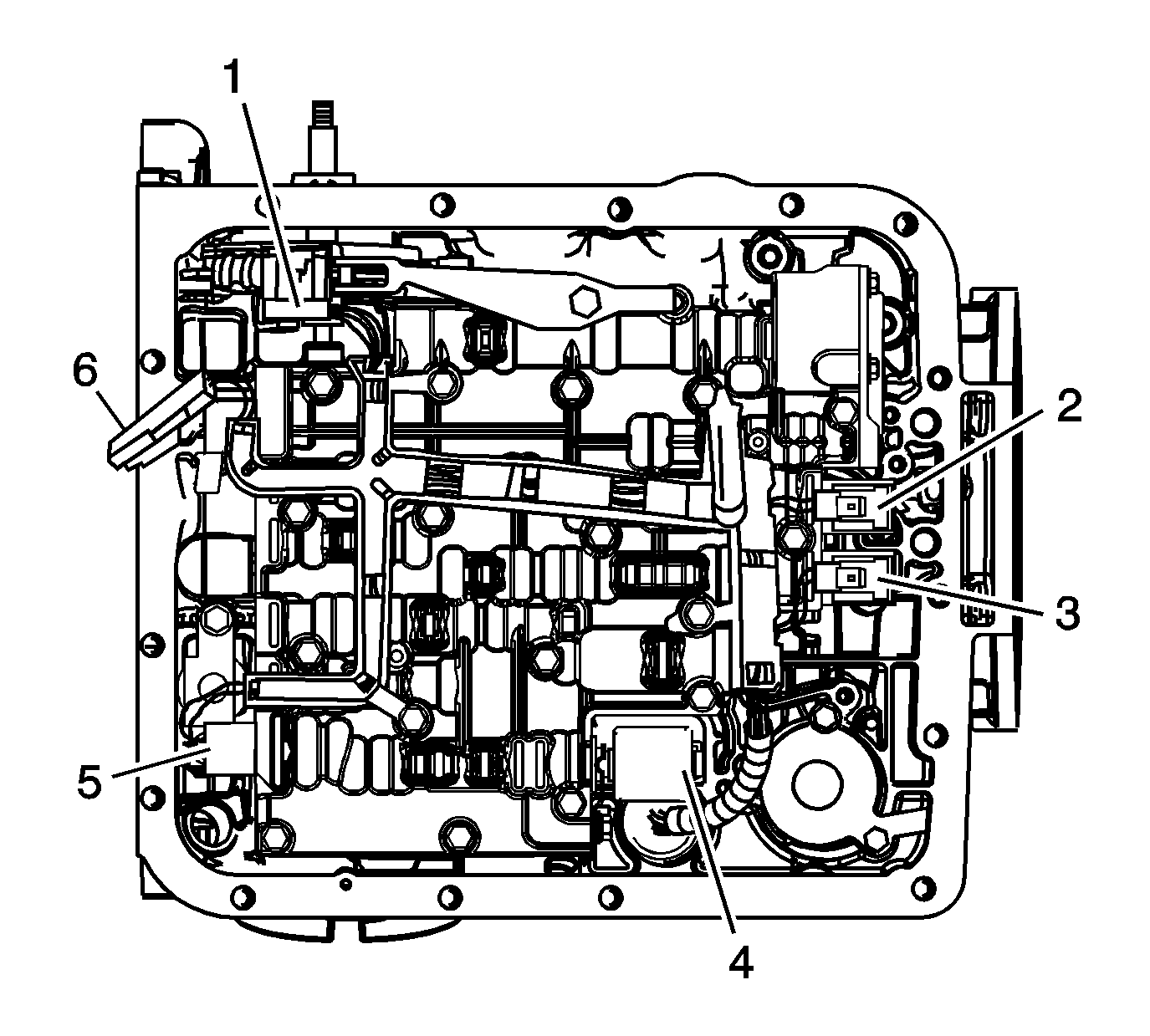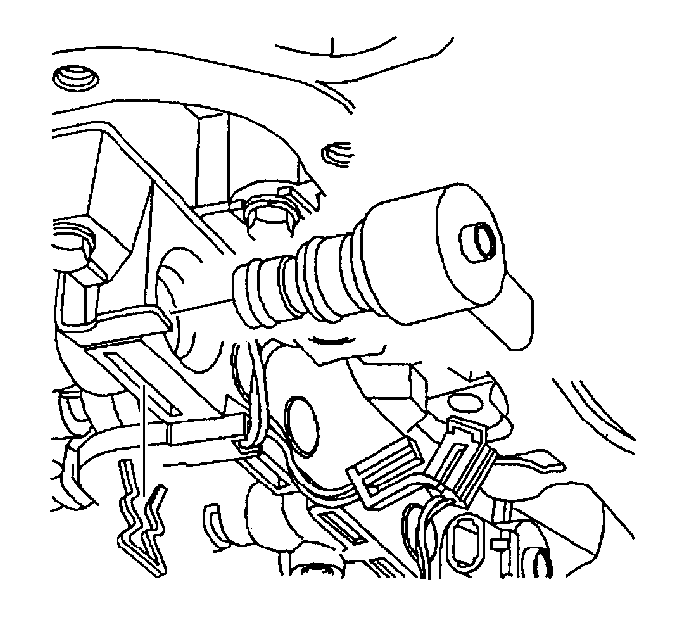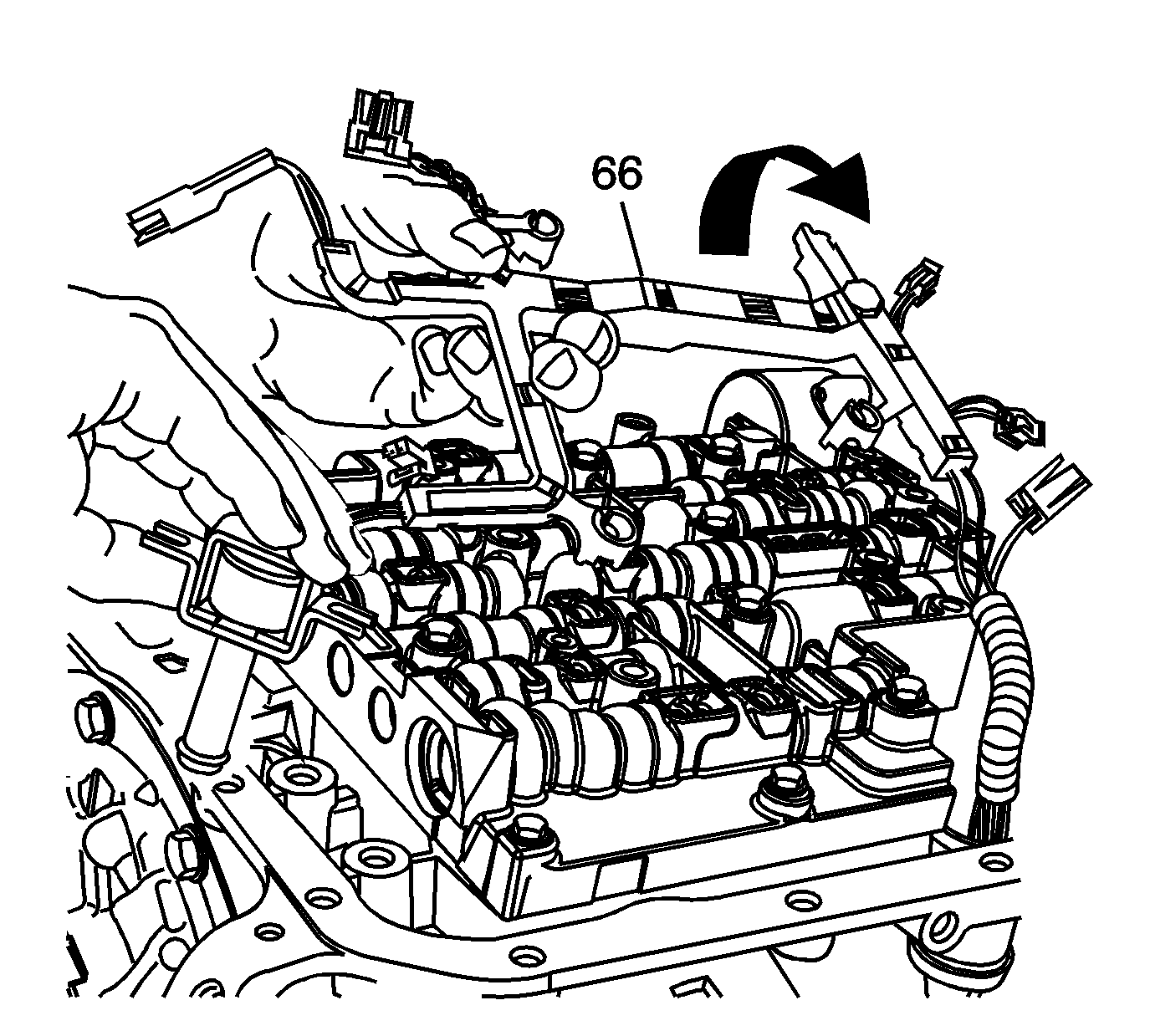Special Tools
J 28458
Seal Protector Retainer Installer
Removal Procedure
- Raise and support the vehicle. Refer to
Lifting and Jacking the Vehicle.
- Remove the transmission oil pan and the filter. Refer to
Automatic Transmission Fluid and Filter Replacement.

- Disconnect the transmission harness 20 way connector from the transmission internal harness pass-through connector.
Depress both tabs on the connector and pull straight up. Do not pry the connector.
Note: Removal of the valve body is not necessary for the following procedure.
- Remove the 1-2 accumulator assembly. Do not remove the spacer plate. Refer to
Accumulator Assembly, Spacer Plate, and Gaskets.

- Disconnect all the internal wiring harness electrical connectors from the electrical components (1-6).

- Remove the TCC PWM solenoid retainer.
- Remove the TCC PWM solenoid in order to access one of the TCC solenoid retaining bolts.

- Remove the TCC solenoid bolts (68).

- Remove the TCC solenoid and wiring harness (66).
Turn the wiring harness over so the wiring
harness hangs down.

- Remove the solenoid retainer bolt (36A) and the solenoid retainer (378).
- Remove the pressure control solenoid (377).
Note the orientation upon removal.

- Remove the TCC solenoid retaining bolts and the valve body bolts which retain the internal wiring harness.

- Using
J 28458
, release the pass-through electrical connector
from the transmission case.
| 13.1. | Use the small end of the
J 28458
over the top of the connector. |
| 13.2. | Twist in order to release the 4 tabs retaining the connector. |
| 13.3. | Pull the harness connector down through the transmission case. |
- Remove the TCC solenoid (with O-ring seal) and wiring harness assembly (66) from the transmission case.
- Inspect the TCC solenoid and wiring harness assembly for the following defects:
Installation Procedure

- Install the wiring harness and TCC solenoid assembly (66) with a new O-ring seal to the transmission.
- Install the pass-through electrical connector to the transmission case.
Caution: Refer to Fastener Caution in the Preface section.

- Install the valve body bolts which retain the internal wiring harness and install the TCC solenoid retaining bolts.
| 3.1. | Tighten the control valve body retaining bolts to
11 N·m (97 lb in). |
| 3.2. | Tighten the TCC solenoid retaining bolts to
11 N·m (97 lb in). |

Caution: Be sure all solenoids are installed with the electrical connectors facing the non-machined (cast) side of the valve body; otherwise, the solenoids will bind against the transmission
case as the valve body bolts are tightened and damage may occur.
- Install the following items:
| 4.1. | The actuator feed limit valve (374) |
| 4.2. | The actuator feed limit valve spring (375) |
| 4.4. | The bore plug retainer (395) |
| 4.5. | The pressure control solenoid (377) |
| 4.6. | The solenoid retainer (378) |
| 4.7. | The solenoid retainer bolt (364) |
Tighten the solenoid retainer bolt to
11 N·m (97 lb in)

- Install the TCC PWM solenoid to the control valve body.
- Install the TCC PWM solenoid retainer.

- Connect all the internal wiring harness electrical connectors to the electrical components (1-6).
- Install the 1-2 accumulator. Refer to
Accumulator Assembly, Spacer Plate, and Gaskets.

- Connect the transmission harness 20 way connector to the transmission pass-through connector.
Align the arrows
on each half of the connector and insert straight down.
- Install the transmission oil pan and filter. Refer to
Automatic Transmission Fluid and Filter Replacement.
- Lower the vehicle.
- Fill the transmission to the proper level with DEXRON® VI transmission fluid. Refer to
Transmission Fluid Check.
Note: It is recommended that transmission adaptive pressure (TAP) information be reset.
Resetting the TAP values using a scan tool will erase all learned values in all cells. As a result, the engine control module (ECM),
powertrain control module (PCM) or transmission control module (TCM) will need to relearn TAP values. Transmission performance may be affected as new TAP values are learned.
- Reset the TAP values. Refer to
Transmission Adaptive Functions.














